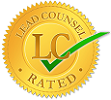Cerebral palsy (CP) is a class of disorders that affects a person’s ability to control muscles, affecting one out of every 345 children in the U.S. When medical experts fail to use reasonable standards of care during delivery and labor, the negligence can cause a detrimental brain injury that can lead to a CP diagnosis. Raising a child with CP is challenging, and you might be eligible for compensation for your baby’s ongoing care costs. Contact Phoenix Personal Injury Attorney Law Firm if you believe negligence in your delivery and labor caused your child’s CP. We can review your case facts to determine whether you have a valid claim and collect evidence to identify the defendant and fight to obtain a satisfactory compensation amount that makes your family whole again.
A Brief Overview of Cerebral Palsy
Cerebral palsy is a collection of disorders that affect an individual’s ability to move and maintain posture and balance. Cerebral refers to the brain’s cerebrum, a brain part that regulates motor functions. On the contrary, palsy means paralysis of voluntary movement in specific body parts, causing challenges using or weakness in the muscles. Damage to a developing brain or abnormal brain development that affects the child’s ability to regulate their muscles causes the condition.
There are many forms of cerebral palsy. The brain injury’s location characterizes them. They include:
- Ataxic CP ― It is caused by cerebellum damage leading to challenges in motor movement and control
- Dyskinetic/athetoid CP is caused by cerebellum damage and basal ganglia. Its symptoms include involuntary movements and fluctuating muscle tone.
- Spastic CP ― The Centers for Disease Control and Prevention reports that spastic CP affects approximately 80% of persons with cerebral palsy. It is due to damage to the pyramidal tracts or motor cortex. Its symptoms include jerking movements and tight muscles.
- Mixed CP ― Several areas of brain damage can cause a child to have at least one form of cerebral palsy.
The symptoms vary from one person to the other. Persons with severe cerebral palsy might require special equipment when walking or fail to walk and need lifelong attention and care. On the contrary, an individual with mild CP might walk cumbersomely and might not require any special assistance. The condition does not worsen with time, but the symptoms can change depending on the individual’s lifetime.
All persons living with CP experience difficulties with posture and movement. Additionally, most have related health conditions like:
- Changes in their spine.
- Joint problem.
- Difficulty with speech, hearing, and vision.
- Intellectual disability.
Early Signs
The signs and symptoms of the condition in question vary significantly depending on the following:
- the levels and types of disability.
- the location of the brain injury.
The most significant sign is a delay in developmental milestones like learning to walk, crawl, roll over, or sit.
An infant below six months will have the following signs:
- The baby feels stiff and floppy.
- The head lags when you hold them up while lying on their back.
- After picking the toddler up, their legs become stiff.
A child older than six months will experience the following symptoms:
- A child that does not roll over in any direction.
- The child cannot bring their hands together.
- The toddler has challenges bringing their hands to their mouth.
On the contrary, a child older than ten months:
- Hops on their knees or scoots around on their buttocks and does not crawl on their legs and hands.
- Crawls unevenly, pushing off with one leg and hand while dragging their other leg and hand.
Children without CP can also experience these signs. If you believe your infant child has one of these symptoms, contact a pediatrician to receive a precise diagnosis.
Cerebral Palsy Diagnosis
Diagnosing cerebral palsy involves steps like:
- Developmental monitoring (Tracking your child’s development and growth with time) — If you are concerned about the infant’s development, they should have a developmental screening test.
- Developmental screening involves giving the minor a test that checks for their movement, motor, and other developmental delays. The pediatrician can recommend some evaluation if your child’s screenings are abnormal.
- Developmental and medical evaluations are performed to diagnose your child’s disorder. The medical provider can:
- check for the juvenile’s muscle tone, posture, reflexes, and motor skills.
- evaluate their medical history, and.
- Conduct imaging tests, lab tests, and genetic tests to make a diagnosis.
CP Treatment
While cerebral palsy has no cure, treatment could improve patients’ lives. It is wise to initiate treatment programs early.
Your doctor should work with you and the child to craft a practical treatment plan. Typical treatment options include:
- Surgery.
- Medication.
- Recreational, speech, occupational, and physical therapy.
- Assistive devices.
Medical Mistakes that Can Lead to CP
Numerous medical errors can contribute to or cause cerebral palsy during a child’s birth or gestation, including:
- Failing to detect or treat a disease or infection happening during gestation, like meningitis or a sexually transmitted disease in the baby or mother.
- Misreading test results or failure to order a diagnostic test.
- Failing to identify and treat Rh incompatibility.
- Failing to detect a prolapsed umbilical cord.
- Failing to schedule and perform an emergency cesarean section based on a medical necessity like a distressed child or the improper child’s position and size.
- Failing to monitor fetal heartbeat, among other crucial signs like lack of oxygen during delivery.
- Failing to detect and respond to the mother’s blood pressure changes during delivery and gestation.
- Prescribing inappropriate drug dosages or drugs during pregnancy.
- Negligent use of instruments like forceps or vacuum resulting in head trauma in the child.
- Failing to treat jaundice.
- Administering a lot of Pitocin to stimulate or induce labor.
How a Doctor Can Prevent Medical Malpractice
A doctor can take steps to prevent CP-related medical malpractice and lower the risk of a baby suffering from CP. A physician treating an expectant mother should:
- Treat jaundice — While most infants are born with jaundice, identifying and treating it early could prevent CP and kernicterus.
- Lower the risk of a head injury — A physical head injury can cause CP. Qualified medical professionals should ensure they use something other than sharp tools or tough equipment during delivery.
- The doctor should check the fetal and maternal blood types early in the pregnancy. If they are different, it can lead to pregnancy complications, adversely affecting brain development.
- Monitor maternal and fetal heart rates regularly — If the fetal heart rate is weak, it could indicate the baby is not receiving sufficient oxygen to their brain.
- Manage all underlying diseases — Maternal health conditions like diabetes or hypertension can lead to pregnancy risks and complications if poorly managed. Physicians should know the complications and take steps to reduce the risks.
Proving the Medical Malpractice
If a physician’s negligence caused your baby’s cerebral palsy, you might have grounds to file a medical malpractice claim. However, you must prove the elements below to pursue and receive compensation.
- The doctor owed you a duty of care.
- The medical practitioner breached the duty of care.
- The breach was the proximate cause and factual cause of your child’s cerebral palsy.
- Your baby suffered damages.
-
The Doctor Owed the Victim a Duty of Care
A plaintiff should prove a physician-patient relationship existed between them and the physician when the negligence happened. The relationship can be established in many ways, like:
- The plaintiff decided to deliver at the medical care facility.
- The healthcare facility assigned the doctor, midwife, or nurse to the plaintiff.
- The medical practitioner agreed to treat the victim.
Some of the common defendants include the following:
- Midwives.
- Nurses.
- Anesthesiologists.
- Healthcare facilities.
- Gynecologists and obstetricians.
-
The Doctor Breached the Duty
A medical provider must exercise some level of care and skills. To verify the breach, you should verify that the expert did not exercise prudent doctor's care, expertise, and skills. The plaintiff can realize this through testimony of a medical provider with similar specialties, experience, skills, training, and specialties as the defendant.
For instance, a healthcare provider must identify signs and symptoms of fetal distress and promptly respond to a dangerous situation. Failing to respond to fetal distress signs is a breach of duty and could make the doctor, midwife, or nurse accountable for resulting injuries.
-
Proving the Breach Caused Your Child’s CP
Arizona medical malpractice needs proving the breach was a proximate and cause-in-fact cause of the child’s CP.
Cause-in-fact
There is cause-in-fact if the medical expert’s conduct caused the result, and the outcome could not have happened without the negligent medical professional behavior. Please the defendant’s negligent act does not require a significant cause of these results.
Proximate Cause
Additionally, you should prove that the negligence and causation relationship between cerebral palsy and the doctor’s behavior might be practically conditional. It means your child’s condition is a predictable consequence of the medical professional’s negligence.
-
Proving Damages
You should also demonstrate that you suffered damages. There are two forms of damages awarded in Arizona medical malpractice lawsuits, namely:
Economic Damages
These damages are easy to calculate. They might present future and current costs associated with your baby’s cerebral palsy. The jury or insurance firm can determine the future amount through a doctor’s recommendation for continuing treatment and expert witness testimonies.
They include the following:
- Medical bills.
- Lost income.
- Lost earning capacity.
Compensation for your medical expenses can cover physician visits, surgery, and any other form of care and treatment, including:
- Occupational therapy.
- Physical therapy.
- Speech coaching.
- Recreational therapy.
- Corrective surgery that addresses relaxing cramped muscles or anatomical defects.
- Orthotics or brace to offer balance and stability.
- Wheelchairs and rolling walkers.
- Medication to manage seizures, alleviate pain, and alleviate muscle contractions.
- Verbal aids like a computer with a voice synthesizer.
Non-Economic Damages
The damages are awarded based on what is reasonable and fair based on the case. They are measured by expert testimonies, the seriousness of the CP, and the condition’s impact on you, your child, and your family. They include:
- Loss of consortium.
- Loss of enjoyment of activities and events.
- Emotional distress.
- Pain and suffering.
You can also receive punitive damages, provided the defendant’s conduct was egregious. Punitive damages punish the defendant and deter them from behaving similarly in the future.
The civil case has no limits/caps on settlement amounts. The law allows a damage award for any amount, provided the award is proportionate and reasonable to the injury or economic losses you and your child have suffered.
On top of these damages, sometimes a plaintiff can be partially accountable for their damages. For instance, if a pregnant mother fails to follow their doctor’s instructions, the jury can reduce their damages. Arizona follows the pure comparative negligence rule; the percent of your liability for your damages is reduced from the total compensation amount.
Suppose your total compensation amount is $100,000, and the jury finds you are 20% accountable for your child’s cerebral palsy. In this case, you will receive only $80,000. A skilled medical malpractice attorney can help maximize your damages by correctly guiding you and pursuing compensation.
How Long Do You Have to Bring Your Birth Injury Medical Malpractice Claim?
Arizona Revised Statutes 12-542(1) defines statute of limitations as the time limit you, the plaintiff, have to bring your civil claim after suffering loss or injuries. You should file your medical malpractice claim against a negligent medical care facility or professional within two (2) years following the cause of action accrues. Otherwise, you lose the right to bring your lawsuit once the SOL elapses. The law protects defendants’ rights and reduces frivolous claims and lawsuits.
The earlier you consult with a Phoenix personal injury attorney, the better. Proof in CP medical malpractice claims is easier to acquire immediately after your child’s diagnosis or birth. The longer you take to discuss the matter, the more issues you will face, including:
- Medical records and files might disappear.
- Witnesses’ memories might fade away.
- Witness become hard to locate or relocate.
- Your credibility might reduce.
- Evidence becomes less reliable.
Under the Arizona discovery rule, the cause of action accrues in a medical malpractice claim when a plaintiff is aware or should reasonably recognize that a negligent medical mistake caused the patient’s losses or injuries.
In other words, the discovery rule is an exception where the SOL does not start until the evidence of medical malpractice or injury is discovered. When relying on a discovery rule, a plaintiff should establish that they did not discover that their child had a CP-related medical malpractice case and could not have learned it if they had exercised reasonable diligence until no more than two (2) years before they brought the lawsuit.
A perfect example is if a doctor negligently fails to diagnose the baby with CP until they are older than three years. In this case, the law will permit you more time before the SOL starts running.
You can also file a wrongful death claim if your child with CP succumbs to medical malpractice. You have two years to file your action from the demise date.
Why Hire a Personal Injury Lawyer
Parents who pursue birth injury compensation on their own go up against medical systems with experienced legal teams. Typically, the teams have dedicated money and time to drag out the claims long enough to frustrate parents. You should hire a competent medical malpractice attorney if you want fair compensation.
Your lawyer can assist you by:
- Investigating the case to identify the defendant involves collecting and reviewing medical files and records and consulting experts. Collecting and analyzing evidence builds robust arguments for compensation.
- Protecting your rights — Your lawyer will protect your rights throughout the case and ensure the defendant and their insurance provider treat you fairly.
- Negotiate with the insurer — The legal professional will negotiate with the defendant’s insurance provider to enter a fair settlement agreement. The lawyer will take the matter to trial if they cannot agree.
- After filing the birth injury lawsuit, your attorney can engage in discovery to learn more about why the medical care provider or health care facility offered negligent care to you and the baby. The discovery will include depositions of the involved parties, document and record requests, expert depositions, and depositions of witnesses.
- The lawyer will advise on different ways to maximize your compensation amount.
- The attorney will keep you updated about the case’s progress throughout the process.
Cost of Hiring a Birth Injury-Related Medical Malpractice Legal Counsel
You might be concerned about the cost of engaging an attorney as a plaintiff, but that should not stop you from seeking professional legal assistance. Most Phoenix personal injury lawyers represent their clients on a contingency basis. You only owe your lawyer attorney fees if the attorney recovers your compensation.
Find a Skilled Birth Injury Attorney Near Me
A newborn baby is every parent’s joy and pride. Therefore, it can be devastating when a medical expert fails to meet their standard of care and commits a medical mistake that results in cerebral palsy. While you cannot undo the birth injury caused to your family and the baby, you have a right to hold the defendant financially accountable. Phoenix Personal Injury Attorney Law Firm understands how overwhelmed and confused you feel after your child’s CP diagnosis. We can help you navigate the available legal options, collect relevant evidence to support your claim, prepare and complete paperwork, and file your case timely.
Please contact us at 602-641-9589 to schedule your no-obligation initial consultation to review your case.










